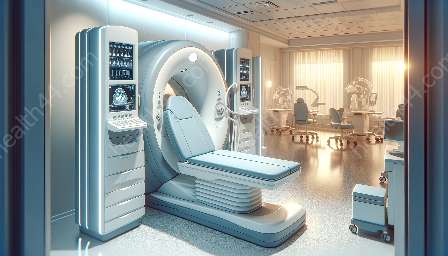X-ray machines are a vital component of diagnostic equipment and play a crucial role in the realm of medical devices and equipment. They are instrumental in aiding healthcare professionals in diagnosing a wide array of medical conditions, offering unparalleled insights into the human body. This comprehensive topic cluster will delve into the inner workings of X-ray machines, their compatibility with diagnostic equipment, and their significance within the medical devices and equipment landscape. From the technical aspects to the impact on patient care, this guide aims to provide a holistic understanding of X-ray machines.
Understanding X-Ray Machines
At its core, an X-ray machine functions by emitting a controlled burst of radiation through a part of the body, capturing the resulting image on a specialized detector. This process enables healthcare providers to visualize the internal structure of the body, making it an indispensable tool in the realm of medical imaging. X-ray machines come in various forms, including conventional radiography, computed tomography (CT) scanners, and fluoroscopy devices, each tailored to different diagnostic needs.
Types of X-Ray Machines
- Conventional Radiography: This traditional form of X-ray imaging involves capturing static images, typically used in skeletal examinations and detecting abnormalities within the body.
- Computed Tomography (CT) Scanners: CT scanners utilize X-rays to produce detailed, cross-sectional images of the body, offering insights into internal structures and abnormalities.
- Fluoroscopy Devices: Unlike static radiography, fluoroscopy provides real-time, dynamic imaging to aid in the visualization of bodily functions, such as swallowing or joint movements.
Compatibility with Diagnostic Equipment
X-ray machines are integral components of diagnostic equipment, working in tandem with other technologies to provide comprehensive insights into patient health. They are often utilized alongside ultrasound machines, MRI scanners, and other diagnostic tools, allowing healthcare professionals to gather a comprehensive understanding of a patient's condition. Furthermore, the integration of X-ray machines with advanced software and image processing tools has revolutionized the interpretation and analysis of X-ray images, enhancing diagnostic accuracy and precision.
Role in Diagnostic Equipment
When incorporated into diagnostic equipment, X-ray machines serve as indispensable instruments for identifying fractures, abnormalities, and diseases within the body. Their ability to capture detailed images of bones, tissues, and organs enables healthcare providers to make informed decisions regarding treatment plans, surgical interventions, and ongoing patient care. Furthermore, advancements in X-ray technology have facilitated the development of 3D imaging capabilities, further expanding the diagnostic possibilities.
Significance within Medical Devices & Equipment
X-ray machines hold immense significance within the broader landscape of medical devices and equipment. Their role in facilitating accurate diagnoses, guiding surgical procedures, and monitoring disease progression underscores their irreplaceable position within the healthcare ecosystem. Additionally, the continuous advancements in X-ray technology, such as low-dose imaging and portable devices, have contributed to enhanced patient comfort and safety, further cementing their importance in medical settings.
Impact on Patient Care
The use of X-ray machines directly influences patient care, enabling healthcare professionals to deliver prompt and targeted interventions based on precise diagnostic information. Whether in emergency situations, routine screenings, or chronic disease management, X-ray machines aid in expediting diagnosis and treatment, contributing to improved patient outcomes and overall healthcare efficiency.
Conclusion
Undoubtedly, X-ray machines stand as indispensable tools within the realm of diagnostic equipment and medical devices & equipment. Their ability to unveil the intricacies of the human body, coupled with their compatibility with advanced diagnostic technologies, ensures their enduring relevance in modern healthcare. From their technical prowess to their transformative impact on patient care, X-ray machines continue to shape the landscape of medical imaging and diagnostic capabilities, making them a cornerstone of medical practice.


